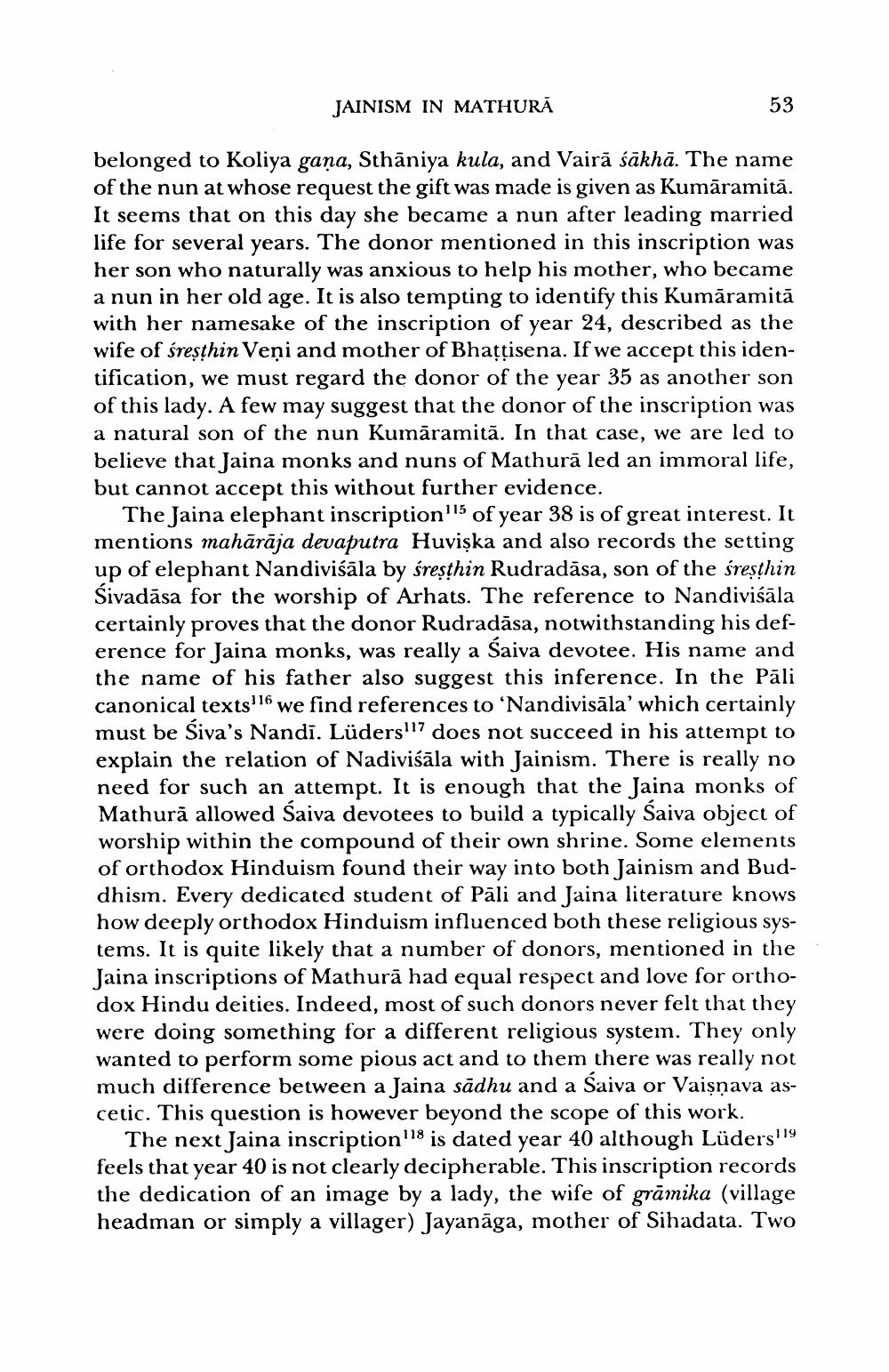________________
JAINISM IN MATHURĂ
53
belonged to Koliya gana, Sthāniya kula, and Vairā sākhā. The name of the nun at whose request the gift was made is given as Kumāramitā. It seems that on this day she became a nun after leading married life for several years. The donor mentioned in this inscription was her son who naturally was anxious to help his mother, who became a nun in her old age. It is also tempting to identify this Kumāramitā with her namesake of the inscription of year 24, described as the wife of śreșthin Veņi and mother of Bhațțisena. If we accept this identification, we must regard the donor of the year 35 as another son of this lady. A few may suggest that the donor of the inscription was a natural son of the nun Kumāramitā. In that case, we are led to believe that laina monks and nuns of Mathurā led an immoral life, but cannot accept this without further evidence.
The Jaina elephant inscription"15 of year 38 is of great interest. It mentions mahārāja devaputra Huviska and also records the setting up of elephant Nandiviśāla by śreşthin Rudradāsa, son of the śreșthin Śivadāsa for the worship of Arhats. The reference to Nandiviśāla certainly proves that the donor Rudradāsa, notwithstanding his deference for Jaina monks, was really a Saiva devotee. His name and the name of his father also suggest this inference. In the Pāli canonical texts'16 we find references to ‘Nandivisāla' which certainly must be Siva's Nandi. Lüders!17 does not succeed in his attempt to explain the relation of Nadiviśāla with Jainism. There is really no need for such an attempt. It is enough that the Jaina monks of Mathurā allowed Saiva devotees to build a typically Saiva object of worship within the compound of their own shrine. Some elements of orthodox Hinduism found their way into both Jainism and Buddhism. Every dedicated student of Pāli and Jaina literature knows how deeply orthodox Hinduism influenced both these religious systems. It is quite likely that a number of donors, mentioned in the Jaina inscriptions of Mathurā had equal respect and love for orthodox Hindu deities. Indeed, most of such donors never felt that they were doing something for a different religious system. They only wanted to perform some pious act and to them there was really not much difference between a Jaina sādhu and a Saiva or Vaisnava ascetic. This question is however beyond the scope of this work.
The next Jaina inscription 18 is dated year 40 although Lüders!19 feels that year 40 is not clearly decipherable. This inscription records the dedication of an image by a lady, the wife of grāmika (village headman or simply a villager) Jayanāga, mother of Sihadata. Two




